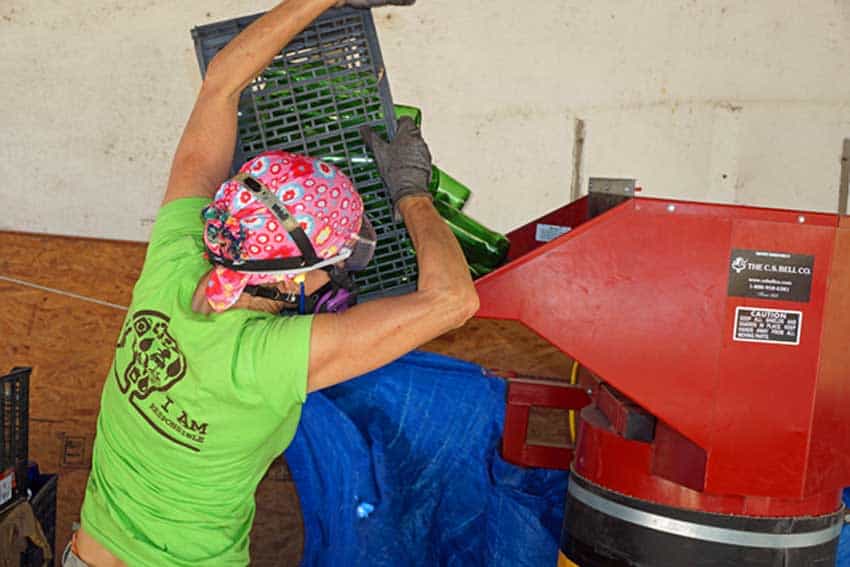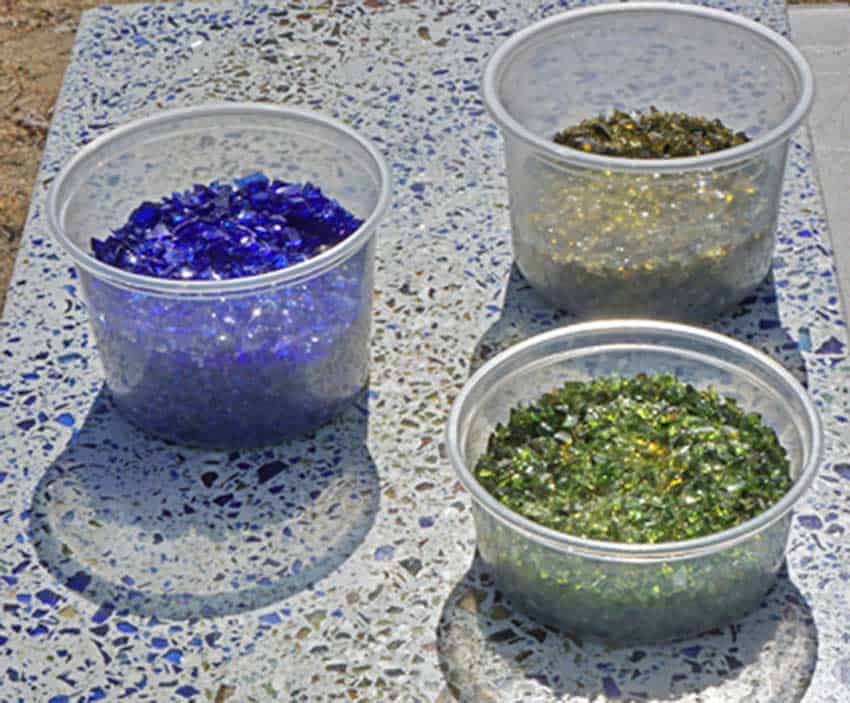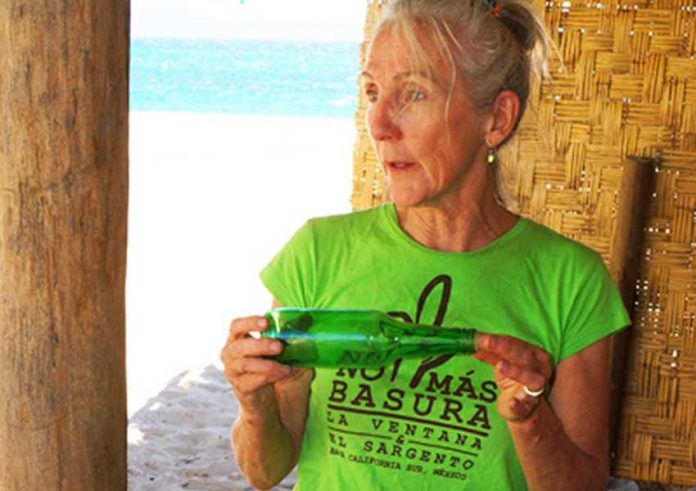Like many Mexican communities, the twin towns of La Ventana and El Sargento in Baja California Sur suffer from serious waste management problems. The community’s single garbage truck breaks down regularly and its inadequate landfill is reaching capacity.
The two contiguous towns sit at the apex of pristine La Ventana Bay on the Gulf of California. They are blessed with scenic beauty, good weather and El Norte, the steady wind blowing across the Bay in winter that makes for perfect kiteboarding and windsurfing.
In fact, La Ventana Bay is regularly listed as either the No. 1 or No. 2 destination in the world for practitioners of these sports.
That’s the good news. The bad news is that the area is suffering from rapid growth. Its infrastructure, including waste management, simply isn’t up to dealing with the increasing population and business activity.
Five years ago, this led a group of residents to found the non-profit No Más Basura (NMB), or No More Garbage, to develop a program to remove recyclables from the waste stream. Not only does it offer a popular weekly recycling event for the community, it’s actively engaged in educational programs K-12 to help raise a new generation of recyclers and to train local businesses in recycling methods. The group also organizes several annual community-wide clean-up days.

One major focus is minimizing the impact of Easter Week on local beaches as some 5,000 people, many from nearby La Paz, gather to party for three or four days. In addition to organizing trash removal and recycling, NMB fields ambassadors from local schools who patrol the beaches to ask campers to take home as much of their trash as possible and to dispose properly of the rest in provided receptacles.
NMB is confronting the two major problems that dog virtually all recycling efforts — raising money to fund the operation and what to do with the recyclables once collected. Recyclers might think: “Good for me. I’ve gotten rid of that stuff in the right way.” But it’s doubtful that too much thought is given to where “that stuff” is going and how.
Most recyclable material is of little, if any, value. So, creative ways must often be found to make use of it. Fortunately, plastics, aluminum and metals are marketable. NMB gives all the plastic to the local schools for them to sell in La Paz. The aluminum and mixed metals are sold to a recycler and the proceeds help buy gas for transportation.
Cardboard is another matter. Since the Chinese banned imports of waste cardboard, the market has collapsed. Prices are so low in La Paz that it’s not worth the gas to take it there. However, NMB is looking into ways to get the commodity to the recycler without making a special trip. Another solution is providing cardboard to Rancho Cacachilas, a local sustainable resort, where it is used as mulch for its extensive organic gardening.
Styrofoam is another significant problem for recyclers. NMB does not accept Styrofoam items such as plates, cups and food containers, but a significant amount in the form of packing materials is provided to a local manufacturer of “eco blocks,” some 80% of which are polystyrene. Eco blocks are used in construction, replacing standard concrete blocks.
Unique to this area, because of unusually high kiteboarding and windsurfing activity, is the presence of discarded sails made of virtually indestructible ripstop polyester. To take sails out of the waste stream, NMB offers them to a local seamstress who manufactures colorful, strong, reusable shopping bags and purses. This also helps keep plastic bags out of the landfill.

But one the biggest headaches facing recyclers is what to do with glass bottles. Each week NMB collects as many as 3,000 bottles — primarily beer, wine and liquor. There is, however, no market for the commodity.
Recycling processors are increasingly reluctant to crush glass for reuse by bottle manufacturers because so much of the glass they receive is contaminated. The cost for removing labels, eliminating contaminates and cleaning glass prior to crushing is prohibitive.
Enter the NMB “glass lady.”
Claire Donahue, a diminutive seasonal resident of La Ventana and NMB member, met with program manager Javier Ponce about two years ago to discuss the glass issue. Claire had some experience in creating art glass and was intrigued by the challenge of dealing with the huge weekly bottle collection. She and Javier decided NMB should crush its own bottles and find local uses for the product.
After doing the necessary research, she located and purchased a glass crusher for NMB to use. It sits in a palapa on her beachfront property where she crushes bottles from each weekly collection.
“Meanwhile, we are moving ahead with plans to build a bodega for the glass crusher on 1.65 hectares on the outskirts of town.”
Label removal was the first hurdle. Claire discovered that labels from most beverage companies are not easily removed. Many are virtually impossible. These “dirty” bottles are crushed to be used by local builders and homeowners for drainage fields or construction footers as a partial replacement for the sand or gravel.
But even if this dirty crushed glass goes to the landfill, it’s still a win since it takes significantly less space than uncrushed glass.
Claire has discovered about a dozen manufacturer’s bottles whose labels are easily removed after soaking. They are washed and turned into clean glass for use in concrete countertops, floors and walls. For countertops, for example, various combinations of colored glass are added to the concrete and ground smooth. Local builder Édgar Ramírez is offering this alternative to customers and experimenting with other uses.
Clean crushed glass is also suitable for decorating pavers, benches, water features and other landscaping applications including mulch. The commodity may also be used as a filler in concrete and road paving.
From an environmental perspective, Claire notes that glass bottles, despite being overtaken by plastic containers, are a better choice. It takes twice as much fossil fuel to make a plastic bottle than a comparable glass container and, in the process, plastic bottle manufacturing releases five times the greenhouse gases and requires 17 times as much water compared with plastic. And they help decrease the plague of plastic going into the oceans.
As soon as practical, she would like to turn the operation over to a third party, either a local entrepreneur or an educator interested in creating an internship program for local high school kids.
Interns would provide part of the labor and proceeds from the sale of the glass and products they’d create could go to a charity of their choosing, a scholarship fund or even back into the program. The internship would also teach many general skills important to anyone entering the workforce.
“There is a lot of excitement about the potential for raw crushed glass as well as the products that can be made locally with it. We hope that a successful project will inspire others in their creative treatment of ‘waste’ for the betterment of our community.
“A community like La Ventana/El Sargento is a great place to be involved in a project of this sort since you really feel like you can make a difference.”
The writer is a newspaper and magazine journalist, photojournalist and the author of two books.
